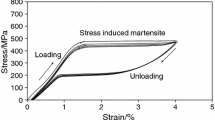Abstract
Objective:
To ascertain the extent to which the new microelectronic sensors Smart Retainer® and TheraMon® are suitable for measuring wear times in orthodontic treatment.
Materials and Methods:
The Smart Retainer® wear-time sensor and a prototype of the TheraMon® microsensor were each polymerized into upper plates. The orthodontic appliances were exposed to periodically altered temperatures in a thermostatic water bath.
Results:
The wear-time sensors recorded the changes in water temperatures as “wear time” (~35 °C) or “non-wear time” (room temperature). The wear times stored in the sensors were displayed and printed outside the water bath as “wear-time graphs” via readout stations and computers. To be better able to predict their reliability and applicability in orthodontic treatment, we measured the accuracy of the two wear-time sensors by comparing the wear times recorded by the Smart Retainer® and Thera- Mon® with the programmed water temperatures.
Conclusion:
Both microelectronic sensors fulfilled the basic requirements for use as objective wear-time sensors in orthodontic appliances in clinical trials and routine orthodontic practice. As it can be incorporated into different orthodontic appliances, the smaller TheraMon® system offers greater versatility than the Smart Retainer®. The TheraMon® also permits the accurate documentation and analysis of wear times down to the minute.
Zusammenfassung
Fragestellung:
Inwieweit sind die neuen mikroelektronischen Sensoren Smart Retainer® und TheraMon® für Tragezeitmessungen in der kieferorthopädischen Behandlung geeignet?
Material und Methodik:
Der Tragezeitmesser Smart Retainer® und ein Prototyp des TheraMon®-Mikrosensors wurden jeweils in Oberkieferplatten einpolymerisiert. Die Zahnspangen wurden in einem thermostatisierten Wasserbad periodisch veränderten Temperaturen ausgesetzt.
Ergebnisse:
Die geänderten Wassertemperaturen registrierten die Tragezeitmesser entweder als „Tragezeit“ (~35 °C) oder „Nicht-Tragezeit“ (Raumtemperatur). Die in den Sensoren gespeicherten „Tragezeiten“ wurden außerhalb des Wasserbads mithilfe von Auslesestationen und Computern als „Tragezeitgrafik“ präsentiert und ausgedruckt. Aus dem Vergleich der von Smart Retainer® und TheraMon® registrierten „Tragezeit“ mit den programmierten Wassertemperaturen konnte das messtechnische Potenzial beider Tragezeitmesser verglichen und Vorhersagen zu deren Zuverlässigkeit und Verwendbarkeit in der kieferorthopädischen Behandlung gemacht werden.
Schlussfolgerung:
Beide mikroelektronischen Sensoren erfüllten wesentliche Voraussetzungen, um als objektive Tragezeitmesser in Zahnspangen sowohl bei klinischen Studien, als auch in der kieferorthopädischen Routine eingesetzt zu werden. Das kleiner dimensionierte TheraMon®-System bietet nicht nur breitere Anwendungsmöglichkeiten zum Einbau in unterschiedliche kieferorthopädische Geräte im Vergleich zum größeren Smart Retainer®, sondern erlaubt auch, die Tragezeiten minutengenau zu erfassen und zu analysieren.
Similar content being viewed by others
References
Ackerman MB, McRae MS, Longley WH. Microsensor technology to help monitor removable appliance wear. Am J Orthod Dentofacial Orthop 2009;135:549–51.
Bos A, Hoogstraten J, Prahl-Andersen B. Towards a comprehensive model for the study of compliance in orthodontics. Eur J Orthod 2005;27:296–301.
Cole WA. Accuracy of patient reporting as an indication of headgear compliance. Am J Orthod Dentofacial Orthop 2002;121:419–23.
Guray E, Orhan M. Selcuk type headgear-timer (STHT). Am J Orthod Dentofacial Orthop 1997;111:87–92.
Kyriacou PA, Jones DP. Compliance monitor for use with removable orthodontic headgear appliances. Med Biol Eng Comput 1997;35:57–60.
Lee SJ, Ahn SJ, Kim TW. Patient compliance and locus of control in orthodontic treatment: a prospective study. Am J Orthod Dentofacial Orthop 2008;133:354–8.
Mitchell JI. It’s time for the Timing Headgear. J Clin Orthod 1976;10:919–20.
Moore RJ, Watts JT, Hood JA, et al. Intra-oral temperature variation over 24 hours. Eur J Orthod 1999;21:249–61.
Müssig E, Berger M, Komposch G, et al. Prädikatoren für die Compliance in der kieferorthopädischen Behandlung. Gesundheitswesen 2008;70:164–9.
Northcutt M. The timing headgear. J Clin Orthod 1974;8:321–4.
Ovsenik M, Farcnik F, Kosorok T, et al. Mouth temperature during removable orthodontic appliance wear. Eur J Orthod 2006;28:e245.
Sahm G. Vorstellung eines Tragezeitmessers zur Abklärung wissenschaftlicher Fragestellungen in der Kieferorthopädie. Fortschr Kieferorthop 1990;51:243–7.
Sahm G, Bartsch A, Witt E. Micro-electronic monitoring of functional appliance wear. Eur J Orthod 1990;12:297–301.
Sander G, Schumacher HA. Problematik der Anwendungszeitmessung kieferorthopädischer Apparate. Fortschr Kieferorthop 1976;37:428–34.
Schott TC, Göz G. Young patients’ attitudes toward removable appliance wear times, wear-time instructions and electronic wear-time measurement’ results of a questionnaire study. J Orofac Orthop 2010;71:108–16.
Author information
Authors and Affiliations
Corresponding author
Rights and permissions
About this article
Cite this article
Schott, T.C., Göz, G. Applicative Characteristics of New Microelectronic Sensors Smart Retainer® and TheraMon® for Mea suring Wear Time. J Orofac Orthop 71, 339–347 (2010). https://doi.org/10.1007/s00056-010-1019-3
Received:
Accepted:
Published:
Issue Date:
DOI: https://doi.org/10.1007/s00056-010-1019-3




